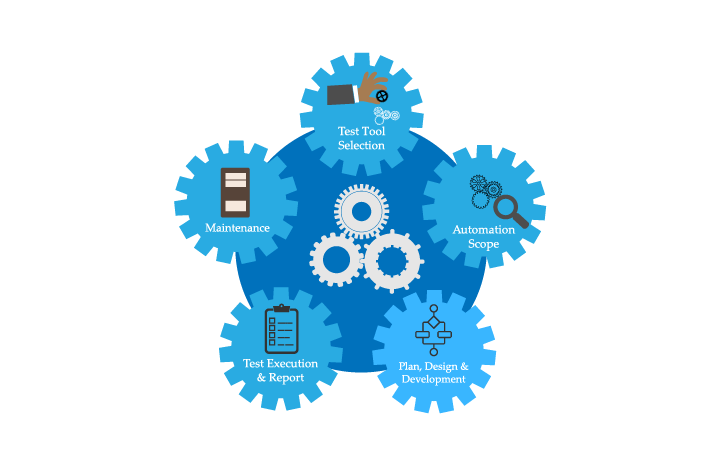Enterprises need to innovate relentlessly to keep customers happy. Investing in technologies to automate test cases is worth taking a chance on this cause. In a world where software testing is the backbone of business-critical applications, test automation improves operational efficiency, performance, quality, and speed. Having cost-effective automation testing processes in your software development cycle is always a key to business success and customer satisfaction.
However, creating a robust test automation strategy is essential before investing and implementing a test automation solution.
What is a test automation strategy?
A test automation strategy is the pre-process of collecting all essential data points and connecting them well to pre-plan what to automate when to automate, how to automate, and select the right automation solution that makes the most sense to your business. It’s a prototype of the same methods and tools to determine who you are testing for, the type of users you deal with, how the testers should perform, the developer’s input, etc.
The primary purpose of a test automation strategy is to give complete information on the overall testing process’s risk, capabilities, and functionality. It also helps QA engineers get reliable, repeatable information along these vectors and effectively communicate the goals and plans of automation. It also acts as an auditing tool that allows QA engineers to step back and check what was planned to do and what was actually done. In a nutshell, a test automation strategy outlines all the processes, plans, and expectations for the testing cycle. Here are the golden points.
- It gives the right way to implement suitable test automation
- Directs when to implement test automation and when not to
- Finalize the right test automation solution that meets all requirements
How to Build a Robust Test Automation Strategy?
Choose the Best Cases for Automated Testing
Before starting your automated testing journey, decide which cases are up for automation. It can save you time and money, reducing resource wastage and unproductive work. Here are some test cases that qualify for automation.
- Test cases that run on multiple configurations
- Cases that require extensive data input
- The ones that take extended periods to complete
- Performance test cases
- Data-driven test cases
Select the Right Automation Tool
First, choose the right test automation solution. Picking one, by no means, is easy. Consider the following to make it seamless.
- A no-code, test automation solution that helps employees learn faster and use it easily
- A solution with technical feasibility that runs tests with no supervision, automatically generates reports, depends less on exact screen coordinates, and runs multiple tests simultaneously.
- Solutions with data management features that avoid dependency on different software products for dataset generation.
- Solutions with good application stability.
- A test automation solution that offers test case reusability.
Create Best-fit Test Automation Frameworks
Build a scalable test automation framework that acts as a guideline and template for your test automation strategy.
- Create a testing framework that covers the execution and a system of reports.
- Build one that has a retry mechanism to re-execute previously failed tests.
- Ensure a well-defined testing scope with a clear understanding of complete testing requirements.
- Conduct periodic framework reviews to clearly understand the unified testing standards and whether they are compliant.
Create a Proper Test Automation Approach
Decide on a proper testing approach and determine the level of testing, roles, and responsibilities of team members. Choose a testing method that can provide the maximum value when automated.
- Create a proper process rollout that is well-defined and structured.
- Figure out everything about the applications you want to automate, and then select an automation platform that supports the technology.
- Make sure to distribute roles and responsibilities with a clear understanding of who does what at a specific part of the automation project.
Analyze All Possible Risks
Risk analysis is an essential part of a test automation strategy. Create a risk document with viable parameters.
- List the possible risks and the actions to resolve them
- Mark the possibility of risks turning into reality
- Estimate the costs associated with each risk
At Avo, we offer a contemporary test automation solution that fits all your test automation strategies. Our gold standard test automation solution, Avo Assure, is helping global enterprises deliver quality software faster and with less operational costs. Get your free demo to know more.





